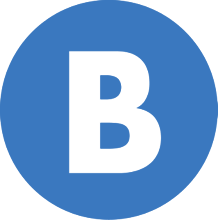Unraveling Meta’s New Twitter Rival and How It Fits Advertisers

The new social media platform, Twitte … er, Threads, is all the rage this month.
Launched on July 6 by Mark Zuckerburg’s Meta, Threads presents a way for Instagram users to interact with each other on a social platform where images aren’t the main attraction. Featuring a model similar enough to Twitter that it’s already sparked lawsuits, Threads enables users to share their thoughts, concerns, loves, and hates through memes, photos, videos, and text posts up to 500 characters, according to Instagram.
This new medium acquired more than 100 million sign-ups in just five days thanks to its direct connection to Instagram. This led to a great deal of media hoopla as a potential “Twitter-killer” threat to the Elon Musk-owned channel, but Threads’ ultimate success is still TBD based on its active daily user engagement.
And that’s where we enter the chat as brand marketers and advertisers, posing a number of burning questions for Threads. Among them:
- How can Threads differentiate itself from what social media consumers already know and use?
- Is there a redeeming quality to Threads that platforms like Twitter and Reddit don’t already have?
- How – and when – exactly will Threads enable advertisers to tap its massive user base?
So far, the biggest apparent point of differentiation for Threads from other social platforms is that it will not focus on courting news and politics, according to Instagram Head Adam Mosseri. The intent here is clear: Threads wants to avoid the hate speech and spam that has plagued its rivals to create a safer space for users – and brands – potentially making it the answer to risk-averse marketing managers’ prayers.
However, steering clear of news and politics could exclude a huge swath of users that utilize social media to stay up to date on those topics and discuss and debate them with others. And without the engagement of breaking news and ensuing debate, will Threads truly attract eyeballs – and keep them coming back for the long term?
Threads does offer some potential benefits for marketers, including sharing similar back-end administration tools to Instagram which offers familiarity for corporate social media managers. But what Threads doesn’t yet offer is any type of advertising or paid promotion.
Now, those advertising features, no doubt, will be coming (this is a Meta-owned platform, after all). In the meantime, though, what’s the right move for your brand in the very-much-still-uncertain realm of Threads?
Here are our tips: Use Threads as social media was originally designed – to directly engage with consumers, build a community, and establish your presence and reach organically before the platform is eventually monetized. Some brands already are offering incentives to grow their following on Threads, including Anthropologie (which is giving away gift cards to users who engage its initial posts) and SlimJim (which is offering a follow-for-follow to its first 100,000 followers.)
So far, brands using audience-building strategies similar to their game plans on Twitter have seen apparent success, according to Digiday. However, keep in mind that a new platform also offers an opportunity for you to explore a new brand voice and presence. So, don’t be afraid to experiment with your content to keep it varied from Twitter and other platforms and to keep users engaged.
Mosseri says about Threads, “We gotta make sure this is an app people want to keep using before we worry about making money,” meaning that the future of the channel relies on users and brands who truly want to give it a chance. So, whether it becomes a social media beast or falls into the abyss like other much-hyped apps before it is, well, a Thread yet to be unraveled.
Let us know your thoughts about Threads and its viability for brands by leaving a comment below!
